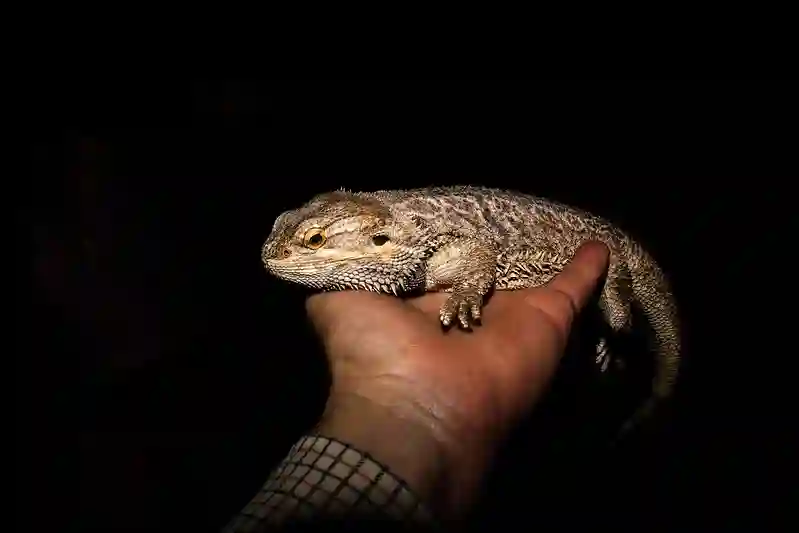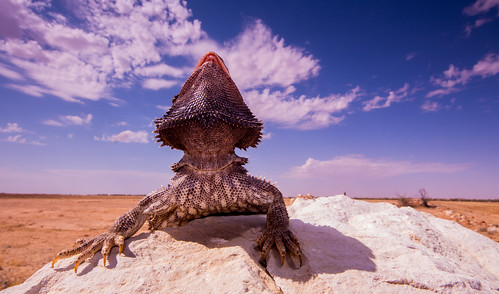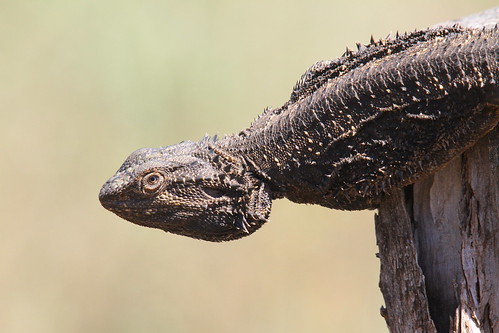There could be several reasons why your bearded dragon’s nose is black. One possibility is that your bearded dragon is shedding its skin. The old skin on its nose did not shed properly, causing a condition called “nose shedding stuck”.
Another possibility is that your bearded dragon has a nose plug. This is formed from old, dry skin inside and around its nostrils that was not removed during shedding. However, if the black color is persistent, it could be a sign that your bearded dragon is suffering from an illness.
Other symptoms may also appear, such as discharge from the eyes and nose, sluggishness, lack of appetite, sunken eyes, lethargy, a weak appearance, underweight, and frequent mouth opening and closing.
It’s also worth noting that bearded dragons may turn black due to stress, illness, or mate desire. If your bearded dragon is experiencing stress, you may notice any of the following symptoms: diarrhea, not getting to the bathroom, not basking, loss of appetite, not eating at all, lethargy, sluggishness, and frenzied activity
Causes of Black Noses in Bearded Dragons
Stress as the Most Common Cause
One of the most common reasons for black noses in bearded dragons is stress. Bearded dragons are sensitive creatures, and any sudden changes in their environment or routine can cause them to become stressed. Some factors that may lead to stress include overcrowding, improper temperature or lighting, lack of hiding spots, and excessive handling.
When a bearded dragon is stressed, its body produces more melanin – a pigment that gives skin its color – which can cause areas of the skin to darken. This includes the nose.
How Stress Can Cause Changes in Skin Color?
When a bearded dragon is exposed to stressors for extended periods, its body releases corticotropin-releasing hormone (CRH), which triggers the production of melanin. This increase in melanin causes darkening of certain areas of the skin, including the nose. In some cases, this darkening may also be accompanied by other physical signs of stress such as lethargy or loss of appetite.
Other Possible Causes: Injury and Infection
While stress is the most common cause of black noses in bearded dragons, there are other potential causes to consider as well. For example, injury to the nose can cause bruising or bleeding that may result in temporary darkening or discoloration. Similarly, bacterial infections can cause inflammation and discoloration around the nostrils and mouth area.
Infections should be treated promptly by a veterinarian with experience treating reptiles. It’s important to note that while darkening around the nose isn’t always harmful on its own; it’s always best to take quick action if you suspect your pet is experiencing discomfort or illness so they can receive prompt medical treatment if needed.
How to Reduce Stress in Bearded Dragons?
Bearded dragons are generally easy-going pets, but they can become stressed for various reasons. Chronic stress can lead to health problems such as weight loss, decreased appetite, and lethargy.
Therefore, it is essential to keep your pet’s stress levels low by providing them with adequate living conditions. Here are some tips for reducing stress in your bearded dragon:
Provide Adequate Space and Hiding Spots
Bearded dragons require plenty of space to move around comfortably. The enclosure should be large enough for your pet to move freely without feeling cramped. Hiding spots are also essential as they help the beardie feel secure and safe.
The hiding spots should be placed at different levels of the enclosure to allow the bearded dragon to climb up or down whenever it wants. You can use different materials such as logs, tunnels, or hide boxes made from non-toxic materials.
Maintain Proper Temperature and Lighting
Proper temperature and lighting are crucial for a healthy beardie. They need a basking spot that has a temperature between 95-105°F, while the cooler side should have a temperature of around 75-80°F.
It is also essential to provide them with UVB lighting that mimics the sun’s natural light. With proper lighting and heating set-up inside their enclosure, it will prevent them from being stressed out or cold when they need warmth or light.
Avoid Excessive Handling
Handling your bearded dragon too frequently can cause unnecessary stress on them because moving around stresses them out. However, socialization is necessary so you don’t want to avoid handling it altogether.
When you do handle your pet, make sure not to grab its tail since doing so might cause harm or distress on its part. Additionally, give them ample time before handling after they have eaten as this would be too stressful for them.
Monitor Your Pet’s Behavior and Environment
It is essential to keep an eye on your bearded dragon’s behavior to identify any signs of stress. For instance, if it is frequently hiding or not eating, it may indicate a problem that needs to be addressed.
Additionally, maintaining a clean living space with proper ventilation will also help reduce stress levels. By following these tips, you can help prevent unnecessary stress in your bearded dragon and create a happy environment for both you and your pet.
Conclusion
Overall, the blackening of a bearded dragon’s nose can indicate stress or other health concerns that should not be ignored by pet owners. However, understanding more about this unique feature on our beloved pets’ faces reminds us just how interesting and complex these creatures truly are.
From the powerful sense of smell they possess to how they communicate with one another through scent, there’s always something new to learn when it comes to our scaly friends. By providing proper care and attention to our pet’s physical health, we can ensure that they live happy and healthy lives full of interesting discoveries about themselves and their environments.


